If you’re considering starting an online business, you should make yourself conscious that you must learn about web design. Even if you are not an expert, you need at least be aware of your goals, the expectations of your targetf audience, and the value of your product or service for them. Above all else, SEO is a goal that, if disregarded, causes the entire web design process to waste time. If you want to succeed in your online business, create a strong brand identity and image, and gain recognition for your online presence, you cannot separate web design from SEO (search engine optimization). What role does SEO play in website design, then? Does SEO play a role in the process of developing a website? How can we comprehend and apply the SEO and web design process?
We will talk about SEO and web design to answer your queries in this article. We will guide you through everything you need to know about web design by first explaining the meaning of SEO and web design. Next, we will dive into the web designing process and explain why SEO and web design are important. In addition, we will give you tips on how to design a website for SEO so you can build a stronger website in terms of online visibility and higher ranking.
Introduction to SEO and Web Design: What Are They? How Do They Work?
You could wonder what SEO and web design signify before getting into the SEO and web design process. SEO, or search engine optimization, is a set of techniques used to improve a website’s appearance and position in search engine results. It mainly depends on improving a website’s ranking in search engine results. Thus SEO experts concentrate on methods to accomplish this goal.
What kind of a role does web design play in this, given that we know that SEO focuses on improving the appearance and ranking of websites? One might ponder. Before examining the relationship between these two elements, you must first understand what web design is.
The process of planning and developing a website is called web design. Code, structure, navigation, layout, colors, fonts, content, and website theme is design principles elements. The website’s appearance results from the combination of all these qualities.
Web Designing Process
The web designing process is the procedure that must be taken to develop a website that is simple to understand, well-structured and practical. There are a few steps you should think about while web designing to ensure that your website is user-friendly and functional.
Therefore, there are typically five stages involved in the web designing process:
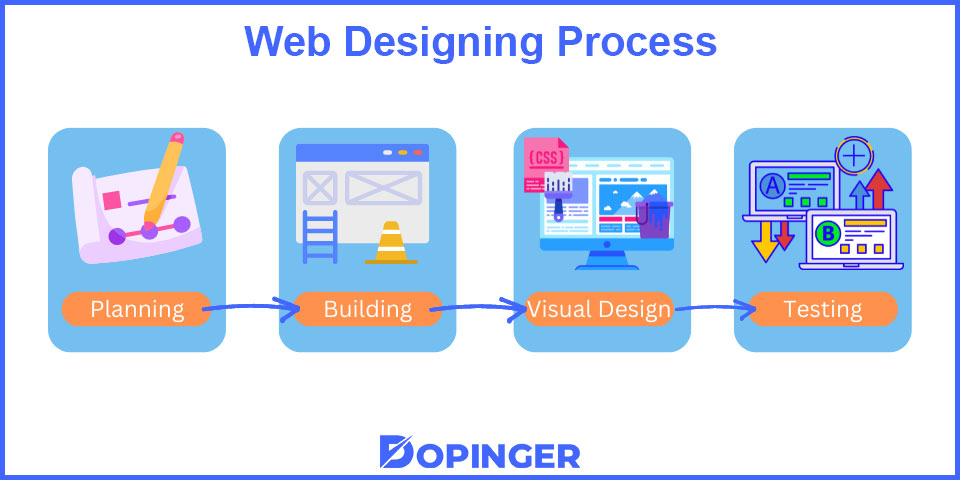
Planning
The planning phase of the web design process is crucial. Make sure you understand what your clients or target audience anticipate from you throughout this step, what you hope to accomplish with your content or product, and how you intend to connect with people.
You will meticulously organize every aspect of your website throughout the planning stage. Consequently, a lot of imagination and brainstorming will be needed for this step.
Building
You should begin building the structure of your website as soon as you are certain of its objectives and content. This is referred to as the web design building stage. You will come across words like sitemap, HTML, web design templates, and internal pages during this stage.
You must turn your website design into a useful HTML/CSS template, add the essential functional units, and then build your website to ensure that it performs properly.
Visual Design
The practice of planning and building a website’s appearance and functioning is the focus of web design. The functionality of your website was the main focus of the building stage, but now the focus is on aesthetics. Creating your website’s visuals comes after the structure has been built.
This step will demand most of your time and energy regarding how your website will look. The visual components of your website, such as its style, color, and font, will be your main focus during the visual design phase. This step will ensure that you enhance your brand identity and image by improving the appearance of your website.
Testing
Now that you created your website, you need to test if it works in terms of functionality. For this reason, testing is crucial before launching your website. Verify that your website is shown appropriately in browsers and that all your links and visual components are loading.
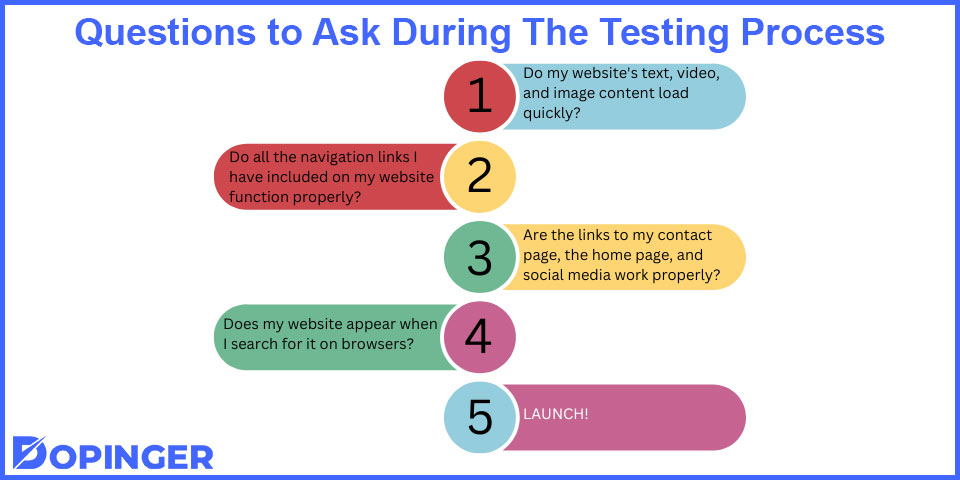
Therefore, you should find answers to the following questions during the testing process:
- Do my website’s text, video, and image content load quickly?
- Do all the navigation links I have included on my website function properly?
- Are the links to my contact page, the home page, and social media work properly?
- Does my website appear when I search for it on browsers?
- Launch
You are prepared to launch your website once you are happy with the testing results and receive your clients’ approval. Make sure your domain name is registered before continuing. Additionally, you will require search engine optimization (SEO) assistance while focusing on the keywords, titles, and website descriptions.
Due to the important role that search engines play in the visibility and sustainability of your website, SEO will assist you in reaching out to people and generating organic traffic for your website.
What Is SEO-Friendly Web Design?
If you’ve read this far, you already understand what SEO and web design are and how the web designing process works. Now that we know the procedures involved in SEO work during the web design process, what precisely is SEO-friendly web design then?
We are aware that SEO works to improve a website’s online presence and to rank on search engine results pages. While web design concentrates on the website’s appearance, SEO focuses on how a website appears in search engine results. This perspective may make you believe that SEO and web design aren’t sufficiently related. For online businesses, it’s difficult to deny the significance and connection between the two, though. Discover Rank Checker, which is one of the most used free SEO tools by Dopinger!
Both web designers and SEO experts have specific responsibilities regarding a website’s success. Even though we see them working in different roles, SEO always comes into play during the web designing process.
In a sense, SEO web design is the planning and developing of an SEO-friendly website. Therefore, SEO techniques are carefully considered and implemented at each stage of the web designing process.
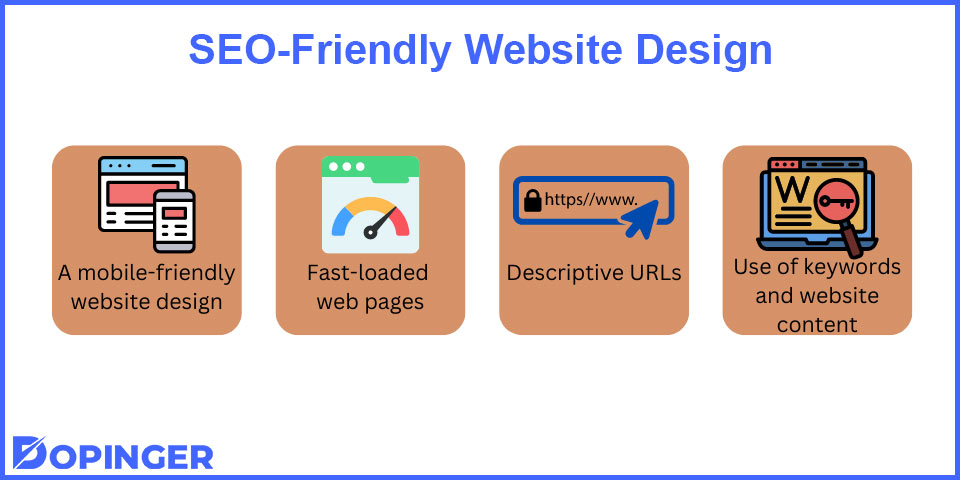
Therefore, an SEO-friendly website design considers the following factors:
- A mobile-friendly website design
- Fast-loaded web pages
- Descriptive URLs
- Use of keywords and titles for website content
There you go! You now know what SEO and web design are and which elements play a crucial role in web design and SEO. If you are still unsure of the role SEO plays in the web designing process or wonder if SEO web design matters for your online business, check the next section.
Why SEO-Friendly Web Design Is Important
We already know that SEO and web design go hand in hand. It’s also impossible to dismiss the significance of SEO because we can’t imagine a website without appearing in search engine results. SEO is a factor in everything we do to increase website visibility, clicks, and page views. Because of this, SEO is present at many stages of the web design process, including planning, content development, and launching.
If you are still wondering why SEO-friendly web design is important for your online business, check the most vital points of SEO and web design we described below:
Improved Online Visibility and Higher Ranking
We are familiar with the concept of online visibility. Numerous variables affect the efficiency of your website and business. One of these elements that significantly affect the success of your website is online visibility. It draws attention to your page content when you make your presence known to search engines and your target audience.
When a user searches for a keyword you use in the content of your website, SEO & web design help your website appear on search results pages. Use the ideal keywords to rank higher on search engine results. To reach your target audience, choose high-value keywords with little competition. This could help your website rank higher in search engine results. Furthermore, the right keywords will help you get clicks to your website and enhance your brand awareness.
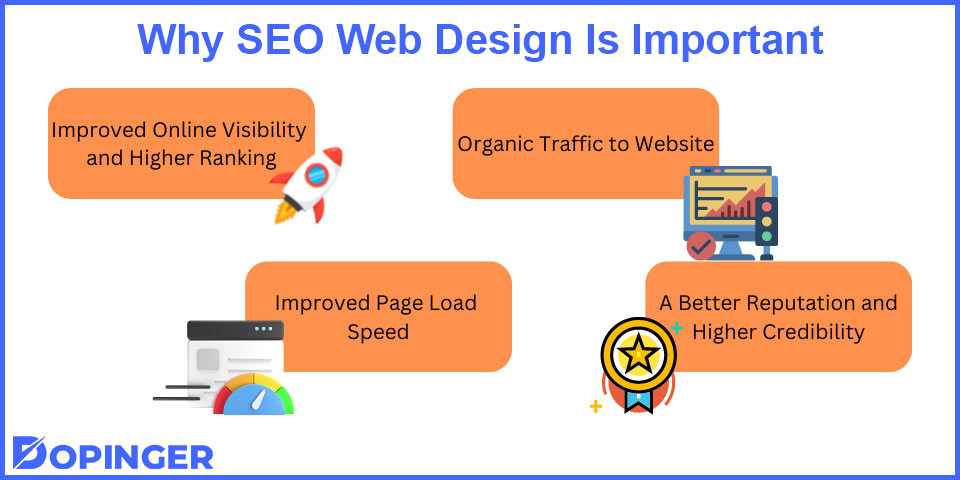
Organic Traffic to Website
Since we’ve already discussed how crucial SEO and web design are to boost your online presence, it’s difficult to ignore how it affects organic traffic. Undoubtedly, more visitors will click on your website content and visit it because it appears more frequently among the top search engine results.
However, remember that while SEO will aid in website discovery, your website’s usability, creativity, and content will encourage visitors to remain on your website. While SEO techniques like keywords, titles, and meta descriptions have an impact on how you appear in search engine results, the content, visual appeal, and navigation links on your website are what will keep visitors on your web page. This makes the significance of SEO web design for online businesses impossible to ignore.
Improved Page Load Speed
Page speed is, without a doubt, one element that affects how high your website appears in search engine results. In addition to assisting you with page load time, SEO-friendly web design will also enhance user experience.
SEO will assist you with the content on your web pages and your website load time while designing it. This will eventually enable you to provide your visitors with a better user experience and motivate them to stay on your website.
With Dopinger’s website speed test tool, you can check your website speed instantly!
A Better Reputation and Higher Credibility
A well-designed SEO website makes an excellent first impression. It encourages visitors to your website to browse around, read or watch your content, purchase your products, and interact with your brand. How does this happen with SEO web design? You may inquire. The effectiveness of SEO is the key to this inquiry.
SEO-friendly web design aims to increase user interaction and the value of your website. An SEO web design aims to direct visitors to your website and assist them in finding your call to action to enhance the traffic volume. It assists you in getting the intended result from your website and, as a result, makes a lasting impression on your visitors.
Over time, this will improve your reputation. Additionally, a good reputation, with more clicks and positive feedback, will also enhance credibility. As a result, no matter your reason for building a website, whether it’s to get more clicks, views, comments, or sales, SEO & web design are necessary to help you get there.
Developing an SEO-Friendly Website
More often than not, we overlook the potential role that SEO could play in the web design process. Given how important SEO is to our online presence and ranking, how could we even consider creating a website without it?
So, let’s now look at how SEO and web design work together to create an SEO-friendly website.
Fundamentals of Web Design for Better SEO Results
You should consider factors like the quality of your content, relevant keywords, page speed, responsiveness to mobile, link building from reputable sources, and web pages with the title tag, links, and images during the web design process to improve your SEO. Search engines will find it easier to crawl your website and rank you higher due to these factors. And this is what makes a website SEO-friendly.
Let’s now examine the fundamentals of web design for improved SEO:
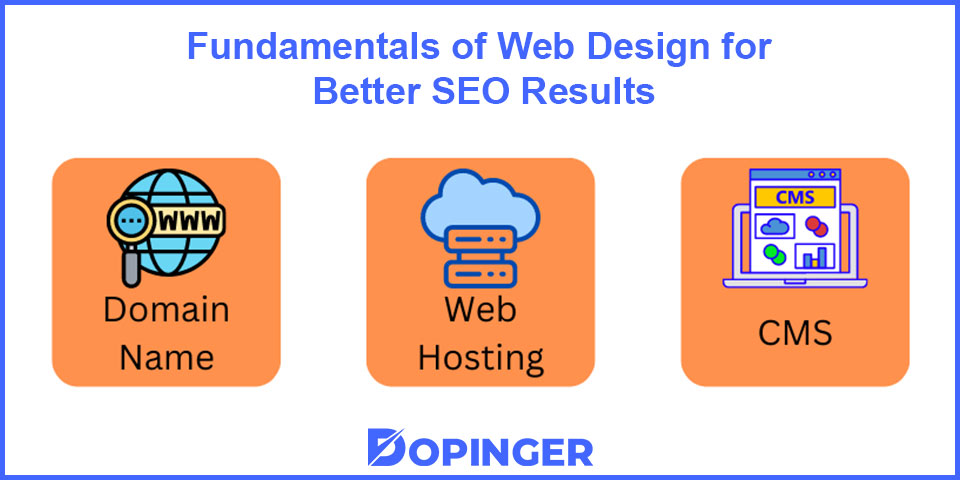
Domain Name
Users enter your domain name to access your website online. It essentially serves as physical evidence that your website is real. In addition to boosting your brand awareness, a memorable domain also makes your website more accessible.
Web Hosting
A hosting service enables you to publish your website on the internet. The server will send all the files required to load your website when a user types its domain name into a browser. So, security and speed should be your top priorities when choosing web hosting. Visitors can leave your website if it loads slowly or isn’t secure. Bearing this in mind, you should steer clear of hosting providers prioritizing lower costs over quality.
CMS
A content management system (CMS) is software that enables inexperienced users to easily add, edit, and manage content on websites. Instead of letting design decisions affect your content, this strategy allows the power of your content to drive the design.
Websites that use content management systems, like WordPress, have grown in popularity. WordPress is a user and mobile-friendly platform that aids in website creation and content management, consequently improving your SEO.
Crawlability and Indexability
The main goal of SEO is to get search engines to access and crawl your website’s pages and links so they can read the content and share it with internet users. The crawling process involves indexing content with spiders and bots from search engines. Any broken or dead links could be a problem and make it difficult for crawlers to access your website. So, you must consider link structure when designing your website.
Link Structure
What mainly impacts crawling and indexing is the link structure of your website. Fixing broken links during the web design will help your website rank higher. Note that looped redirects and dead links may cause poor SEO performance.
Site Structure and Hierarchy
The purpose of the architecture of your website is to identify and organize its content while enhancing functionality to provide a better user experience. Site hierarchy helps create a well-structured website where you can find crucial information to prevent users from getting lost.
To design a well-structured website, remember to reduce your primary categories to a minimum and your subcategories relevant to your main category. A category should not be abandoned by adding just one piece of content. You can come off as unprofessional and lose visitors as a result.
Example of Page Structure
To understand the hierarchy better, let’s have a look at the page structure of a website that sells books below:
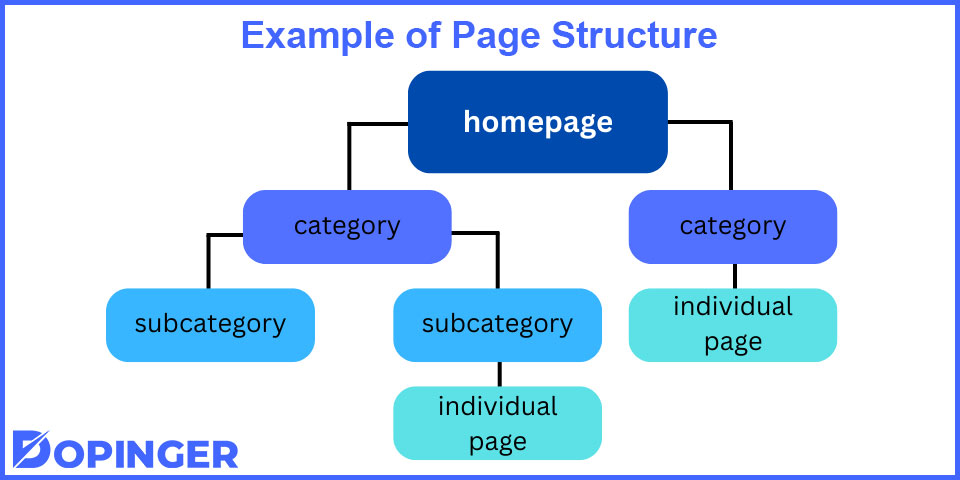
- Website: Home page
- Top-level category: Categories
- Subcategory: Contemporary books
- Individual page: The name of the book
Example URLs
Your website’s organizational structure brings up the subject of URLs. The top-level category and subcategory of your website are revealed in the URL, which also shows whether you successfully designed your website’s architecture.
Let’s see a good illustration of how to structure the hierarchy of your website:
- URL: https://example.com
- Top-level category: https://example.com/women-clothing
- Subcategory: https://example.com/women-clothing/sweatshirts
- The product: https://example.com/women-clothing/sweatshirts/product
Let’s now look at an unsuccessful example to understand this subject better:
- URL: https://example.com
- Top-level category: https://example.com/w1
- Subcategory: https://example.com/w1/s1
- The product: https://example.com/w1/s1/1
Navigation
Knowing that navigation is how users will make their way through your website, you should pay special attention to how you design it. Your website’s desktop and mobile designs should be a priority regarding navigation if you want your SEO and web design to work together.
Common Mistakes Made in Navigation Design
Let’s look at some of the navigational mistakes that are frequently made on websites below:
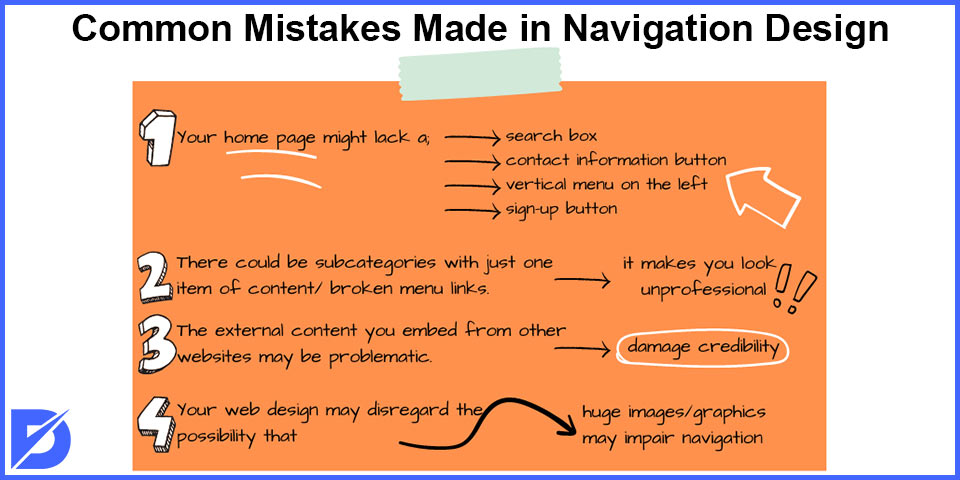
- Your home page might lack a search box, a contact information button, a vertical menu on the left, or even a sign-up button. Your website may experience high bounce rates as a result of this.
- There could be subcategories with just one item of content or broken menu links. It could give the impression that the page is not being updated and make you look unprofessional.
- The external content you embed from other websites may be problematic. This could damage your credibility.
- Your web design may disregard the possibility that huge images or graphics may impair navigation.
Mobile Friendly Features
The fundamental component of SEO and web design is optimizing your website for a high-quality user experience. Because of this, mobile-friendly features should be integrated into your website during the design process rather than attempting to add them afterward.
Due to the quality of your mobile device and server, the mobile surfing experience may be slower than the desktop. So, you should concentrate on your image, video, font, icon, and server optimization throughout the design process to prevent any issues.
Page Speed
Optimizing your website for user-friendly features, such as mobile-friendly features, page speed, and secure browsing, depends on a set of characteristics called Google’s Web Vitals. You can use it to follow a few guidelines to improve your ranking and page speed.
Page speed is the time it takes for a web page to load once you click on it. It takes 5 seconds on average for a web page to load. However, if it takes longer than 10 seconds, you may lose visitors. So, you can use an image optimizer, minimize the design to be mobile-friendly, and upgrade to a faster service when designing your website. This will help your web page load faster and improve your SEO.
How to Design A Website for SEO
We know that web design is all about the functionality and appearance of your website, while SEO is all about getting found in search engine results. No matter how visually great your website design is, if no one can find it, it won’t matter. Because of this, SEO web design not only aids in website optimization for search engines but also helps you maintain your ranking throughout the design process. How do we accomplish this?
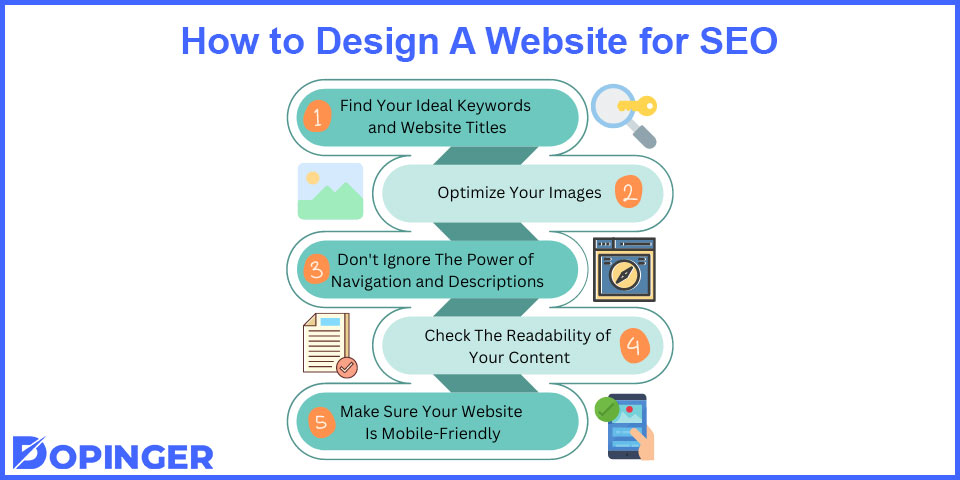
You may optimize your website design for SEO by considering a few things during the web designing process. If you’re not sure where to begin, check the suggestions we’ve offered below:
Find Your Ideal Keywords and Website Titles
If you have begun the web design process, it indicates that you have already established your goals, content, and product. You must get visible on search engines before distributing your information to your target audience. To do this, you must identify the appropriate keywords that apply to your content.
Conducting keyword research is necessary if you want to utilize the proper keywords to make it easier for search engines to understand your site content and display them on search results. The sooner you discover the keywords your industry and competitors are using, the better chance of discovering high-value keywords that your competitors have overlooked. You can create a keyword research checklist to track your strategy.
Along with keywords, you should identify titles that inform search engines about the subject of your content. This will make your content and website more visible to search engines. Therefore, while designing your website, include relevant keywords and titles in the content.
Optimize Your Images
Your website’s page speed is influenced by the size and quality of your images. For SEO purposes, you must thus optimize your images for SEO as part of the web design process. Because of this, you might think about employing an image optimizer to reduce the size of your pictures without compromising their quality as you work on the visual design of your website.
Don’t Ignore The Power of Navigation and Descriptions
One element that contributes to a better user experience is website navigation. Keep your navigation as simple as you can when developing your website to make it easier for users to understand and navigate your web pages smoothly. Improved navigation will keep users on your site longer, generate more clicks and views, and positively impact your SEO.
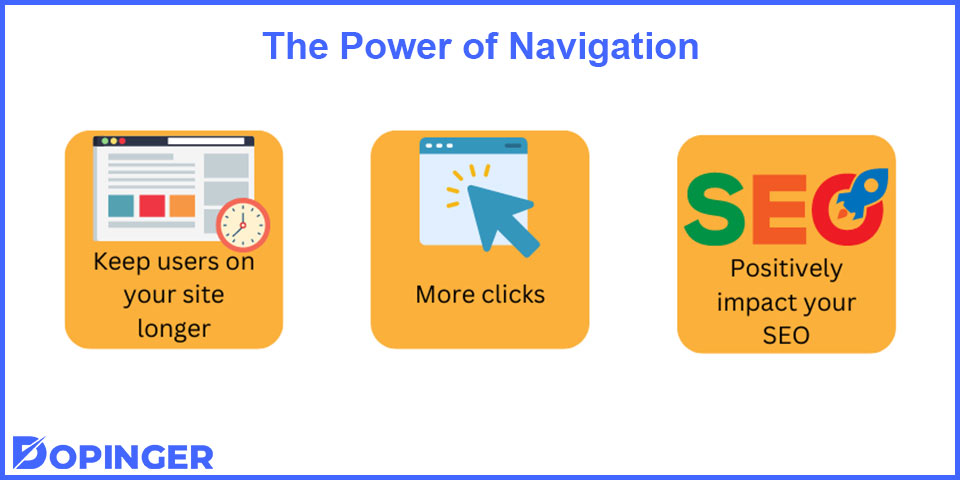
When adding web pages and sections to your website, include helpful descriptions that will aid visitors in understanding the content and navigating the site. Be sure that they are effectively guiding users as these descriptions will be put to the URL of your website, for instance, buyacoffee.com/coffees/capsules.
Additionally, when creating your website, be sure to organize the hierarchy of your website navigation and choose the location of your critical information, such as the call to action and contact details.
Check The Readability of Your Content
We frequently hear the phrase “content is the key,” whether it applies to marketing, online commerce, or web design. It’s hard to overlook the significance of your content, even though it isn’t the only factor that has a role in the success of your website. However, note that if your website’s content is poor, visitors will leave quickly regardless of how attractive your website design may be.
Therefore, keep in mind while building your website that your content needs to be accessible, clear, and simple to read. To achieve this, choose the appropriate fonts and colors when developing your website’s content and visual appearance. You can be sure that doing this will increase website traffic and enhance your SEO.
Make Sure Your Website Is Mobile-Friendly
If your website is not optimized for mobile devices, you fail to build an SEO-friendly website. Today, most consumers favor using their mobile devices to browse the internet. It is, therefore, difficult to escape the benefits of a mobile-friendly website. You may improve user experience and your search engine ranking by making your website accessible to all mobile devices.
Conclusion
To wrap up, if you want to build a website that helps rank higher on search engine results, it’s difficult to disregard the importance of SEO in the web designing process. That’s why we discussed SEO and web design in today’s article. We explored the relationship between SEO and web design and clarified their respective definitions.
In addition, we looked at the process of web design and how to create a website with SEO in mind. We hope this article has successfully informed you about SEO and web design and how it may benefit your online business.
Consider checking out our WordPress web design services if you need professional help with web design for your WordPress website!
Frequently Asked Questions About
If your website has a poor web design, it will have poor content, including low-quality images and videos and difficult-to-use navigation. A poor web design will cause visitors to leave your website, increasing your bounce rate. Your SEO efforts and ranking will suffer as a result.
SEO and web design will help you improve your online visibility, bring organic traffic to your website, and increase your ranking on search engine results. It will also help your web design with a faster page load speed and mobile-friendly design.
The most well-known website builder for SEO today is WordPress. If you prefer to check other website builders for SEO, you might also try tools such as Wix and Squarespace.
In the end, SEO and web design strive to improve user experience. While web design attempts to do this by enhancing the website’s structure and visual appeal, SEO aids in this by enhancing online presence and ranking in search engine results. It’s difficult to overlook the impact of SEO on web design because we know that your website’s visual appearance is useless if no one can discover you. Because of this, SEO is a key component of good web design.
Avoid utilizing irrelevant keywords and graphics in your content, unreadable text, lack of information about your web pages’ calls to action, and contact details on your navigational links. Don’t neglect the significance of website loading speed in favor of irrelevant images and videos. Don’t ignore the significance of your website’s security in addition to all of this. A lack of security on your website can turn away visitors, which may end up harming your SEO.

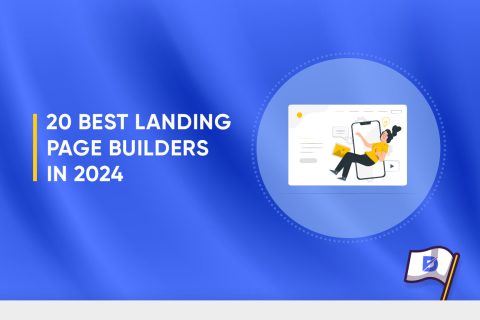
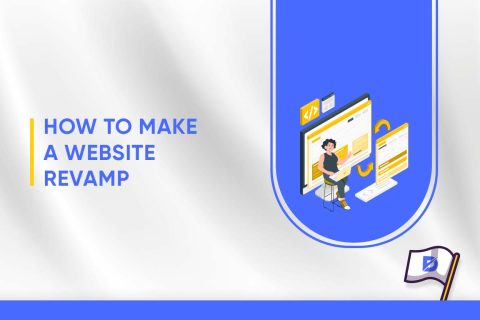
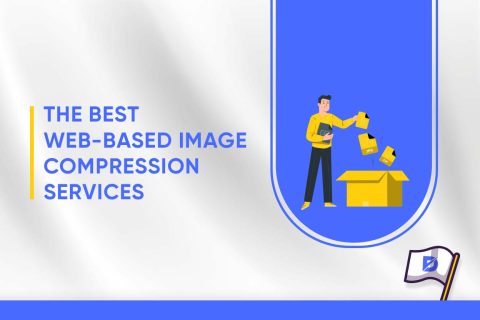

No comments to show.